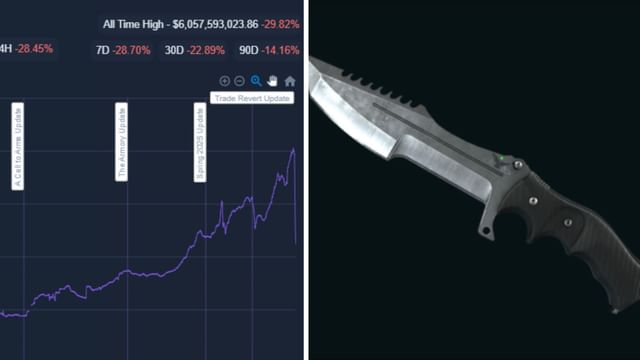Print Fix Hub
Your go-to source for everything print-related, from troubleshooting to tips.
Why Your Skin Trade Might Just Be a Mirage in CS2
Uncover the truth behind skin trading in CS2—why it might be more illusion than reality. Don't get caught in the mirage!
Is Your Skin Trade in CS2 a True Investment or Just a Fantasy?
The debate around skin trading in CS2 as a viable investment has sparked much interest within the gaming community. On one hand, rare skins can fetch impressive prices, sometimes reaching thousands of dollars in online marketplaces. However, the question remains: Is this just a fantasy built on the hype surrounding these digital items? Many players approach skin trading with the hope of turning a profit, relying on fluctuating market trends and the desirability of particular skins. Yet, akin to stocks or cryptocurrencies, the value of skins can be erratic, often influenced by factors such as game updates, community sentiment, and external economic conditions.
To determine whether your skin trade in CS2 is a true investment or merely a fantasy, it's essential to consider both the historical performance of skins and your personal goals as a trader. If you view this as a long-term investment, understanding the nuances of supply and demand becomes paramount. Additionally, keeping an eye on market trends, engaging with dedicated trading communities, and having a strategy can improve your odds of success. However, for many, the thrill of trading skins is more about the experience than profit, signifying that the allure of skin trading may be a fantasy for some players, making it crucial to manage expectations.

Counter-Strike is a popular first-person shooter game series that has captivated players around the world. It features team-based gameplay where players can choose to be part of the terrorist or counter-terrorist teams. For players interested in trading skins, learning how to reverse trade cs2 can enhance their experience in the game's economy.
The Illusion of Value: Why Your Skin Trade Might Not Be What You Think
In the realm of skincare, the illusion of value can often mislead consumers into believing that higher price points guarantee better results. Daily, we are bombarded with marketing messages that equate expense with effectiveness, creating a sense of urgency to spend more on products that are often no more effective than their less expensive counterparts. This phenomenon leads many into a false sense of security, questioning the integrity of their choices based on superficial metrics like packaging and brand prestige rather than actual performance.
To truly understand the value of your skincare trade, it's essential to dissect what constitutes an effective product. Ingredients, formulation, and proven results should take precedence over price tags. Consumer education plays a crucial role here; knowing how to read labels, understanding your skin type, and recognizing marketing tactics can empower you to make better decisions. Remember, just because a product has a hefty price tag does not mean it will deliver the promised results—you might just be caught in the web of the illusion of value.
What Should You Consider Before Diving into CS2 Skin Trading?
Before diving into CS2 skin trading, it's crucial to understand the basics of the process. The first step is to familiarize yourself with the game's economy, which includes knowing how skins are valued and what factors contribute to their prices. Skins can vary significantly based on rarity, demand, and market trends. Additionally, consider setting a budget prior to starting, as the allure of rare items can lead to impulsive decisions. Researching various CS2 skins and their historical performance can provide valuable insights into what to buy, hold, or sell.
Another important aspect to consider is security, especially since skin trading often involves real money transactions. Make sure to use reputable trading platforms that have a solid reputation within the CS2 community. Be wary of scams and phishing attempts, which are unfortunately common in the world of online trading. Never share your account information or engage with suspicious websites. By prioritizing your safety and understanding the market, you can enjoy a successful and secure trading experience in the realm of CS2 skins.